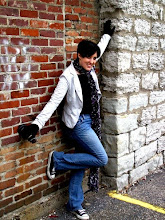
However, once we got into the exercise (and yes, was it ever exercise!) I started to realize how great of a class this was. With the pounding beats of clubbing music, the instructor (Ashuana) guiding us through the routine and my previous dance skills coming in handy (fluidity and freedom with motion), I knew that I would return.
And so I will this Saturday. I signed up for a full level 1 course and am looking forward to it. The class provided me with such a workout last time, that I know I will have a bikini ready tummy in no time flat. Yes, I was sore for 1 week minimum with a basic introductory class, but oh I could see the results of that workout.
So, as a result of my eyes being opened to other forms of dance, I encourage you to try a new dance today. Don't let a stigma stop you from freeing yourself from the boundaries of your mind.
If you live in the Louisville, KY area and are interested in this dance form, visit the website ( www.moderndayfitnessky.com) and sign up for a basic intro class.. no obligations and a ton of fun!
Keep dancing!



